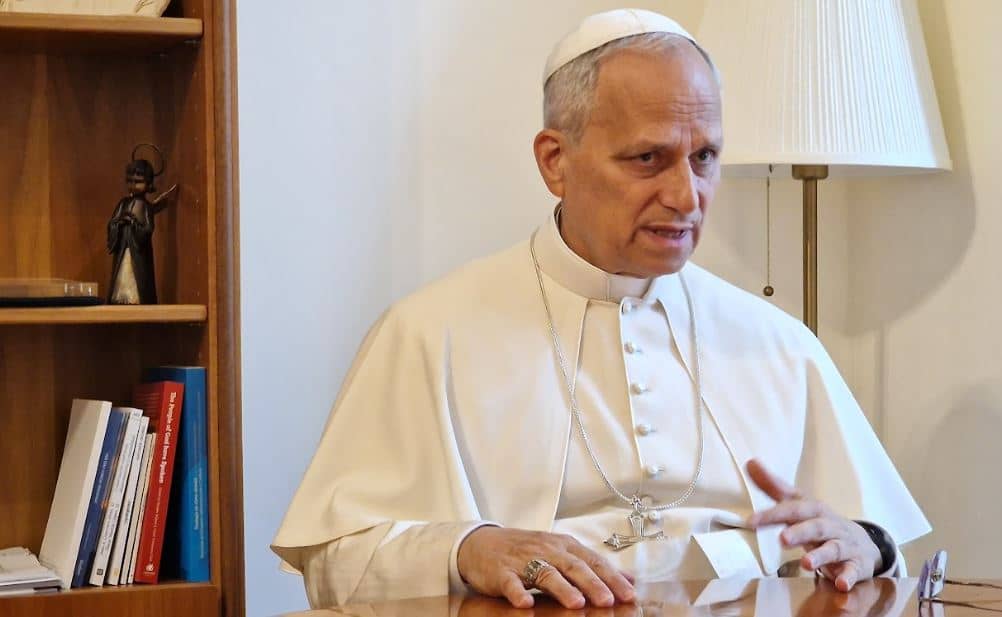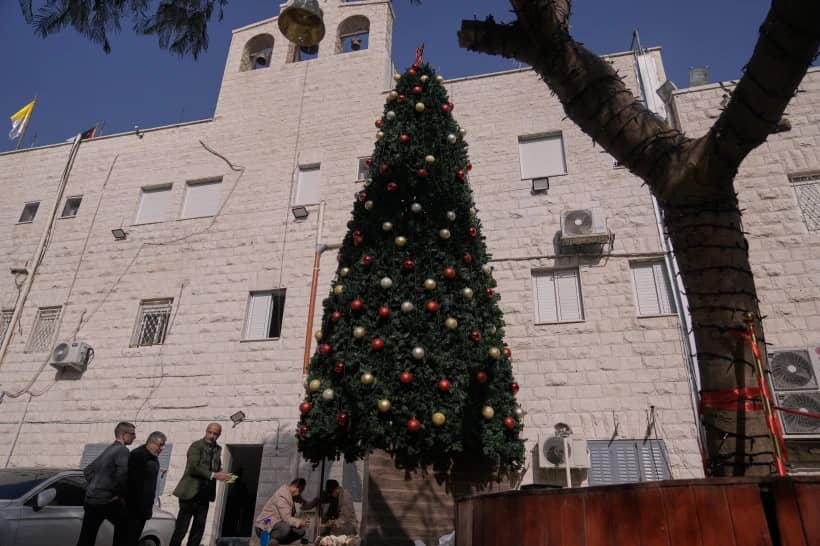ROME – If at any point beginning October you find yourself strolling around Vatican offices and you hear Pink Floyd, Genesis and some Spanish-speaking rock band, odds are, you found the office of Rodrigo Guerra López, recently appointed by Pope Francis to a key role in the Vatican.
Guerra López will soon take up his role as the Secretary of the Pontifical Commission for Latin America, and could potentially help shape the continental Church for years to come.
Crux spoke with Guerra López at length, discussing what Latin America can offer to the global Church, the role of the laity, the synodality experienced in the mystery of Our Lady of Guadalupe, and his fears of becoming “clericalized” by the machinery that is the central government of the Catholic Church.
What follows is the second part of his interview with Crux. The first one can be found here.
Crux: What is the contribution that the Church of Latin America, from the Vatican, can bring to the universal Church?
Guerra López: A first challenge, or personal mission, is to help so that the Pontifical Commission for Latin America is never, never a hindrance, a problem or a headache for CELAM and the bishops of Latin America as it was many years ago … I had to go to the commission and live experiences of inquisition, of very strong questioning, prior to the V General Conference of the Episcopate of Latin America and the Caribbean in Aparecida. I was questioned as a member of CELAM, and they made me feel as if CELAM was on the verge of heresy. This has to stop, because the way in which Latin American bishops should relate to the Holy Father has to be filial.
The second is showing that the Latin American Church, providentially through Pope Francis, and the Latin American magisterium, has a contribution to make to the Universal Church. We are no longer a reflection of the European Church, but we are a source that can help Europe and the United States to be reborn.
I say this because in Europe there may be great intellectuals and thick books of dogmatic theology. But in many places and environments there is a pastoral collapse. In Latin America perhaps there is poverty, perhaps there is no sophisticated pastoral organization, but we have popular religiosity, we still have families and communities with faith, we have 12 million people visiting the Virgin of Guadalupe every December 12 in Mexico City, and similar demonstrations in every Marian sanctuary. In all Latin America we see that there is still a reserve of spiritual and cultural energy that can nourish a new missionary effort in countries that have lost the strong reference, for example, to popular religiosity and to a life of faith. It’s perhaps less enlightened, but more profound from the point of view of the personal encounter with the living person of Jesus.
Hopefully, the Pontifical Commission for Latin America can collaborate so that Latin America shines in Rome, so that the pluriform Latin American Church is shown in all its colors and in all its manifestations, enriching those who want to live a contemporary experience of faith, evangelization and synodal journey, like the one that [Archbishop Miguel Cabrejos of Trujillo, Peru] is leading in the presidency of CELAM.
For the reader who knows little about the Church in Latin America. What can you recommend for them to read so that they have a real idea of the Latin American ecclesiology?
I think, without hesitation, of two texts, really very small, but if one meditates and prays with them, the view of Latin America and the understanding of what is happening, expands.
First, paragraphs 11 and 12 of the Aparecida document. There, in 2007, the Latin American bishops told us enough of moralism, it is necessary to start again from Christ. We all have to start again, not only the lay faithful, not only the people of God, but also pastors, theologians, pastoral agents, experts. We all have to learn to start again with simplicity from the living person of Jesus Christ, above our ideas. Our ideas often give us security at certain moments of life, but sooner or later they need to be critically reviewed and deepened. That is why we must start again from Christ, so that life may be new and not merely make-up and cosmetics.
The second text is the Nican mopohua, written by Antonio Valeriano, where the encounter of Mary of Guadalupe with the Indian San Juan Diego is narrated. It is a very small text but with great force it shows us how Mary meets with an Indian, how she adopts his language, his signs and his mentality to announce to him the true God for whom she lives. And then we see how when the indigenous man tries to build his own project – not following what Mary had told him – she seeks him out, meets him again, and does not reproach him for his sin but treats him with great tenderness, saying to him, “Am I not here who am your mother?”
She tries to ensure that there is no fear in following the will of her son. This message also helps us to understand that we lay people have to verify our intuitions and our faith with our shepherd: Mary sends St. Juan Diego to the bishop. The bishop, upon hearing him and looking at the evidence that the bishop himself had asked to believe in the apparitions of the Virgin, falls to his knees in front of the image that miraculously appears in the clothes that St. Juan Diego was wearing.
And there begins a synodal path, that is, a path in which the lay person indicates the good news to the bishop, and the bishop is evangelized by the humblest and most humiliated of the inhabitants of the New World: an unknown Indian who suddenly met the Virgin.
I believe that the Nican mopohua allows us to understand not only the story of Guadalupe, but also why the mestizaje [a mixture of races and cultures] took place. There is an inexplicable sociological phenomenon and it is that here there was not an extermination of the indigenous, even though there were many deaths. There was, from 1531, 10 years after the conquest of the region by Spain, a mestizaje.
And this is an empirical proof that a new fraternity is possible, a new way of healing the wounds. There are scars, some very painful, but a new people emerged, a baroque people, a people that is not exactly European nor indigenous. It is a Latin American synthesis so peculiar that it is manifested in the music, in the culture, in our uses and customs. It allows me as a Mexican to meet a person from Argentina, to identify her immediately as my sister, despite the fact that Madrid is closer to Mexico than Buenos Aires.
From this point of view, the message of Guadalupe contains part of the vocation that Latin America has in the context of the nations of the world.
Your predecessor was often officially introduced as the “highest ranking layman in the Vatican,” though technically speaking, that position now falls on Paolo Ruffini, prefect of the Dicastery for Communications. The description still is pretty accurate, particularly with an Argentine pope. How would you describe the role of a lay person in the Holy See, perhaps thinking particularly in the context of synodality?
The main challenge for a layman is to remain a layman, not to become clericalized! To maintain a secular and lay profile, even in the midst of the cassocks and the curial behaviors. It has to be acknowledged, these are sometimes proper of a very important ecclesial structure such as the Vatican, but it’s also true that sometimes they are excessive and require a restructuring.
I am convinced that the reform of the curia, more so than reforming structures, requires a reform of mentality. So, I hope to be able to continue listening to rock music, to be able to continue working academically, contributing with enormous lay freedom within the Roman Curia and to show that the laity are not second-rate Christians, but that we can work with our brother bishops with equal dignity, each one having a mission.
I have always lived in a very secular world, I know the cassocks, but I try not to be under their shadow. And I hope to be able to have a fraternal relationship with the bishops and cardinals, to survive in the curia and to contribute as well. If a lay person becomes clericalized, it really becomes a problem for everyone.
The important thing is that the laity remain free, and perhaps my ignorance of the curial protocols will allow me to say things that may be politically incorrect from time to time so that then. And I hope also not to disappoint the laity of Latin America by becoming a lay person who has been absorbed by such a dense environment as the curia.
Lastly, I hope that Emilce Cuda [named as head of office of the academy], who will accompany me in this work and who is such a brilliant and committed woman, will be a positive shock for the Roman Curia and that between the two of us we can send a message that the time of clericalism is over and that it is necessary that lay people, priests, bishops and cardinals see one another as a gift to the Church in equal dignity.
You mentioned rock… who’s your favorite singer or what’s your favorite band?
Peter Gabriel, one of the former vocalists of Genesis, Pink Floyd, Yes… progressive rock. And like all good Mexicans, I like Soda Estereo [an Argentine band regarded as the most important and influential Spanish-language band ever and a legend in Latin music].
You will be moving to Rome at some point in late September. Are you coming alone or with your family?
I will be accompanied by my mother, who is 92 years old. I hope also my youngest son, although he is already a grown up, and of course, my wife.
Follow Inés San Martín on Twitter: @inesanma

















